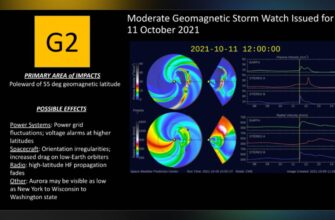In an era where space is no longer solely the domain of state-funded giants, private enterprises are stepping up to play a pivotal role. Russia`s recently approved national project “Cosmos” is a testament to this shift, with companies like “New Space” at the forefront, pushing the boundaries of Earth observation through advanced radar satellite technology.
- The “New Space” Imperative: A Dialogue on Innovation
- “Oculus”: A New Eye in the Sky for Technological Sovereignty
- Building a Constellation: More Than Just a Single Satellite
- Integrating with Roscosmos: A Collaborative Future
- From Orbit to Earth: “Argos” and Ground-Based Radar Innovations
- The Private Sector`s Role: An Expanding Universe
- “New Space”: A Precedent for Success
The “New Space” Imperative: A Dialogue on Innovation
Anton Alexeev, CEO of “New Space,” a private IT and R&D company, recently illuminated the accelerating pace of radar satellite development. Speaking at the International Technology Congress-2025 (ITC-2025) in Patriot Park, Alexeev offered a glimpse into the future of Russia`s space endeavors, emphasizing the critical role of private innovation.
“New Space,” having secured a significant round of investments in mid-2024, is now operating in an accelerated development mode. Their participation in ITC-2025 marked a public debut, featuring discussions on the Northern Sea Route`s development, dialogues with “friendly nations,” and showcasing their solutions for terrestrial, aerial, and cosmic applications. Crucially, their involvement extended to a meeting on Earth Remote Sensing (ERS) market development, led by Roscosmos, and a session by the Ministry of Economic Development focusing on SCO and BRICS markets, underscoring their strategic alignment with national objectives.
“Oculus”: A New Eye in the Sky for Technological Sovereignty
At the heart of “New Space`s” contribution to the “Cosmos” national project is the “Oculus” radar satellite. This ambitious undertaking is not just about launching hardware; it`s about solidifying Russia`s technological independence in space. Alexeev notes, “We were involved as industry experts during the formation of the national project itself… Our most crucial role is as co-executors of the federal project `Communication and Earth Remote Sensing`.”
Development is progressing swiftly. The preliminary design is being refined, and the technical specifications for the radar payload are complete. The company is actively experimenting with the most vital component: the active phased array antenna (AFAR). Alexeev expressed “cautious optimism,” stating that significant testing results are expected within six months, which will validate their technological capabilities, drawing parallels with their successful radar systems for UAVs.
With the AFAR development on track, the focus will shift to the satellite platform, integration, assembly, and launch. While initial estimates projected a three-year timeline from the active project phase, recent investment opportunities suggest a possible acceleration, aiming for the “Oculus” apparatus to be ready by 2028.
Building a Constellation: More Than Just a Single Satellite
The vision extends far beyond a single “Oculus” satellite. The ultimate ambition is a constellation of 12, ideally 20 or more, radar satellites. Such a grouping would enable “live radar monitoring” of critical areas, notably the entire Northern Sea Route (NSR).
Comparing to international leaders, who operate constellations of 10 to 40 satellites, Alexeev stresses the need for scale. With one “Oculus” satellite, data for the entire NSR could be refreshed every 2.5 days; with six, this drops dramatically to approximately 6.5 hours. “New Space” plans to reinvest virtually all generated revenue back into expanding the constellation, a clear sign of their long-term commitment.
Beyond hardware, the company is also building its information infrastructure and software. A prototype platform for ordering images is already accessible, with plans to integrate thematic image processing modules tailored to customer needs.
Integrating with Roscosmos: A Collaborative Future
The “Oculus” platform is poised for integration with Roscosmos`s unified ERS data fund. This means Roscosmos will act as a significant client, aggregating requests from ministries and agencies and purchasing images from both state and private satellite operators. However, ministries retain the flexibility to procure services and analytics directly, fostering a competitive and diverse market. Key consumers are expected to include the oil and gas sector and users of the Northern Sea Route, often seeking sophisticated analytics rather than raw imagery—think deforestation tracking, oil spill detection, or permafrost subsidence monitoring.
From Orbit to Earth: “Argos” and Ground-Based Radar Innovations
“New Space`s” ingenuity isn`t confined to space. The “Argos” radar, initially an offshoot to demonstrate microwave technology competence to investors, has evolved into a standalone product for unmanned aerial vehicles (UAVs). While such systems exist globally, Russia has lacked serial production. “Argos” fills this gap, offering all-weather, day-and-night imaging capabilities for critical decision-making.
With two contracts already signed for operational units, the company also plans to introduce a vertical take-off and landing (VTOL) drone this year, designed for extensive area coverage. The “Argos” system boasts a high level of domestic production for its core components, with the microwave block and antenna being proprietary developments. While some microelectronics originate from “friendly countries,” assembly and board soldering are done in-house. This project also holds significant export potential, potentially channeling additional funding into their satellite technologies.
Further extending their radar expertise to terrestrial applications, “New Space” has developed a ground-based radar system (GBSAR) for geotechnical monitoring of quarries. This joint venture with GEOSUPPORT, a leader in the Russian quarry monitoring market, has already produced a prototype successfully field-tested in the Rostov region. Set for a 2026 launch, this technology addresses critical safety concerns in quarries, where fog often renders other technologies like LiDAR ineffective, making radar an ideal solution for preventing landslides and protecting personnel.
The Private Sector`s Role: An Expanding Universe
Alexeev passionately argues for a more vibrant private space sector in Russia, highlighting the diverse opportunities beyond traditional state endeavors:
- Communication: Broadband, narrowband, geostationary, low-Earth orbit, Internet of Things (IoT).
- Earth Remote Sensing: Optical and, crucially, radar imaging (where “New Space” is a pioneer).
- Other Areas: Climate satellites, rocket engineering, orbital stations, and eventually, space tourism.
He points out that “New Space” will not directly compete with Roscosmos`s radar satellites, which serve different formats and objectives. Instead, the demand for several billion square kilometers of annual radar imagery from Russian agencies means “the more SAR (Synthetic Aperture Radar) units that appear, the stronger our national sovereignty will be.” Currently, “New Space” is the sole private entity in Russia actively developing radar ERS satellites, a position they are willing to share expertise in, should others emerge.
Comparing Russia to China, where over 500 active industry players emerged after a 2014 government directive opening the space sector to private investment, Alexeev underscores the potential. Private companies, he believes, should primarily focus on areas with commercial value: satellites and launch vehicles. While fundamental science and manned space travel will likely remain state prerogatives for the foreseeable future, the “taxi-on-demand” model for satellite launches, provided by private rocket companies, would be a game-changer for constellation replenishment.
“New Space”: A Precedent for Success
Dmitry Bakanov, CEO of Roscosmos, once noted the scarcity of successful private space ventures in Russia. Anton Alexeev believes “New Space” is poised to change that narrative. “We assembled our team at just the right time,” he asserts, detailing their journey since 2021—building a foundational base, accumulating expertise, and securing investor confidence. “We are deeply aware of the subject matter, the market, and the niches where we can establish ourselves,” he adds.
“New Space” is committed to navigating this path with minimal errors, aligning with state policy, regulatory frameworks, and the objectives of the new national space project, all while focusing on real customer needs. With this pragmatic yet ambitious approach, Alexeev is confident in their ability to achieve their goals, not only advancing Russian private cosmonautics but also positioning the country for the export of its innovative space services.
Authored by [Your Name/Journalist Name]
[Date]





